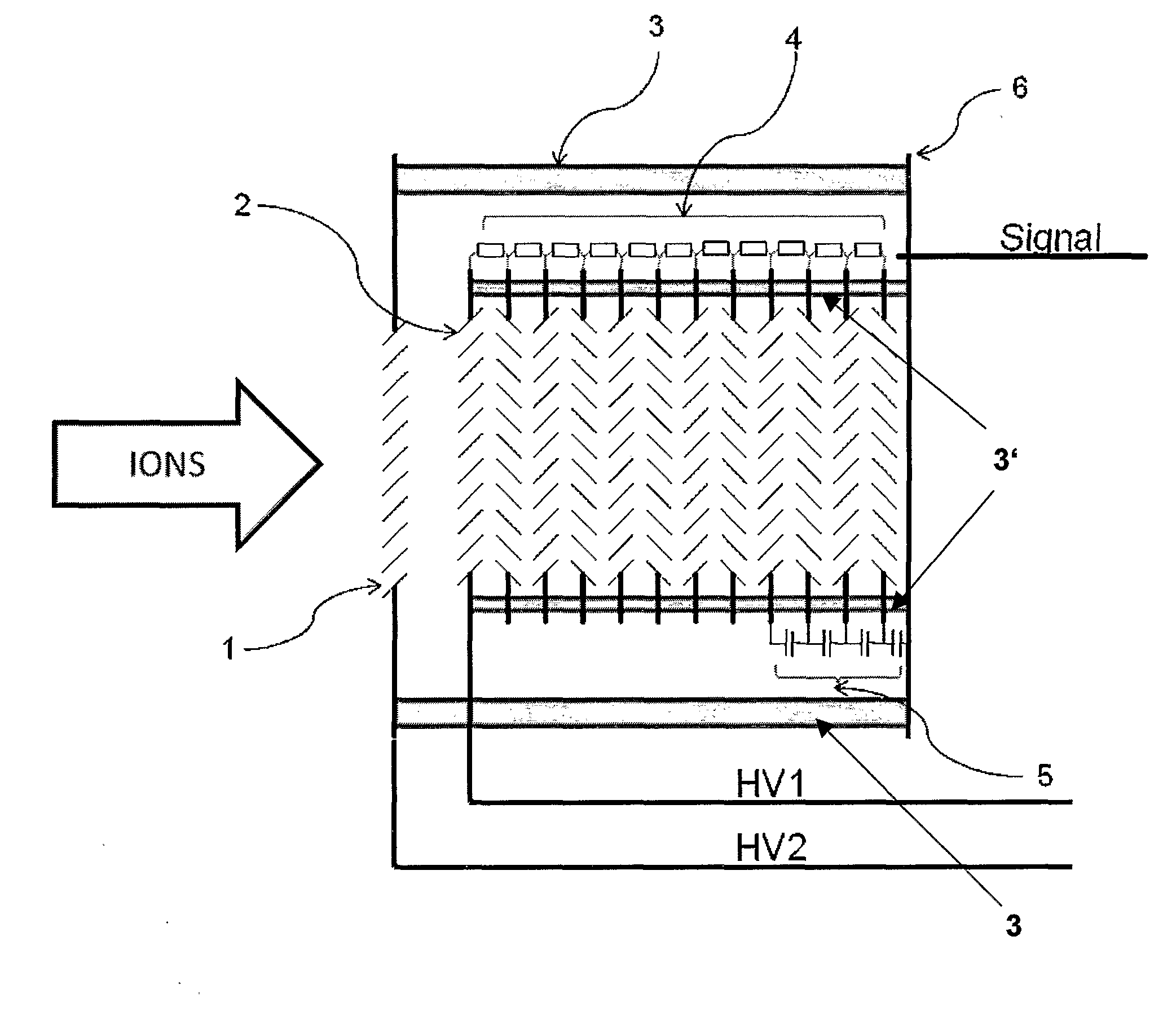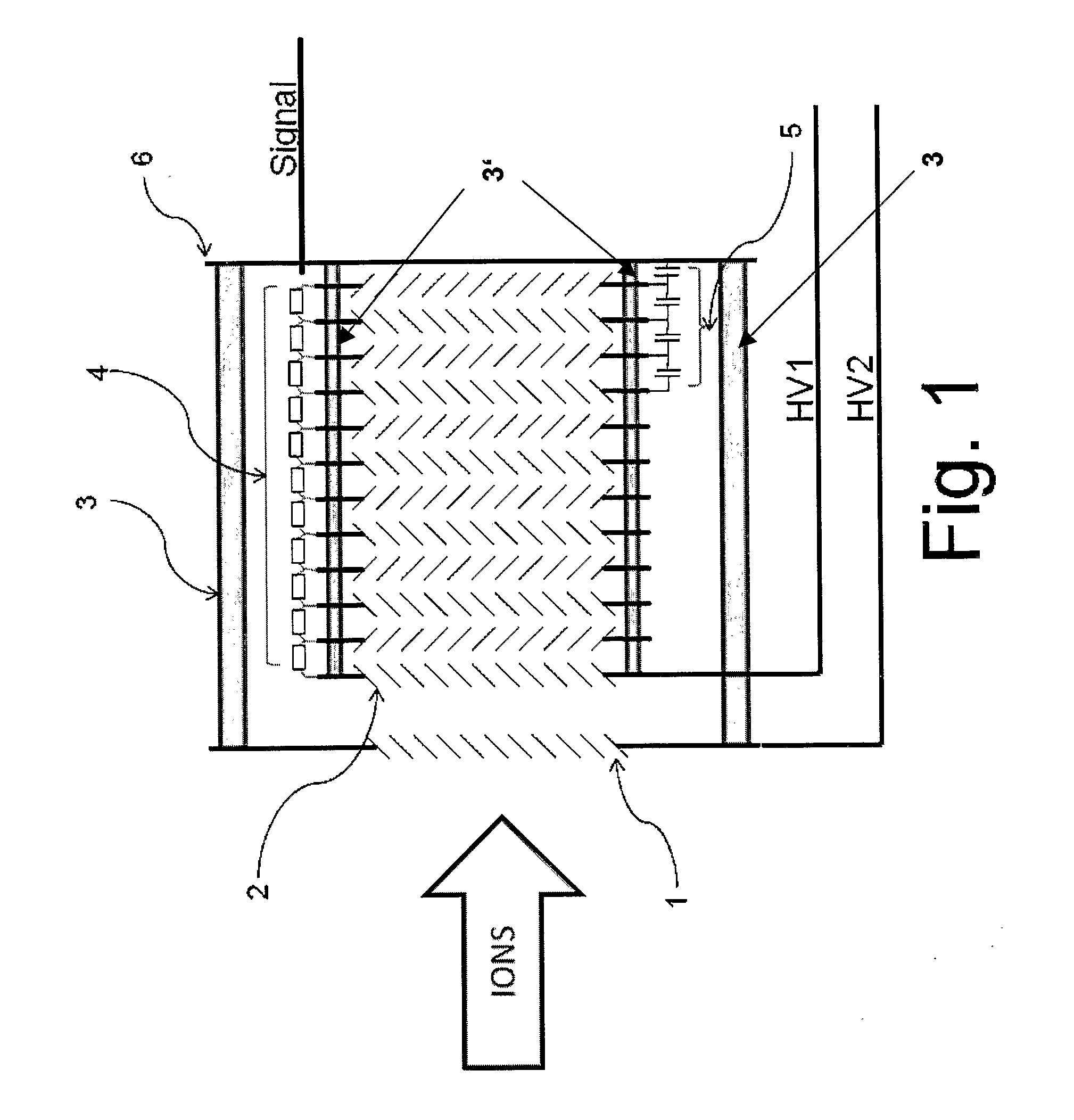Detector device for high mass ion detection, a method for analyzing ions of high mass and a device for selection between ion detectors
a detection device and high mass technology, applied in the field of timeofflight (tof) mass spectrometry, can solve the problems of high energy, difficult ion detection, and low velocity attained during a typical tof experiment, so as to improve the detection of high mass ions, reduce saturation effects, and increase sensitivity
- Summary
- Abstract
- Description
- Claims
- Application Information
AI Technical Summary
Benefits of technology
Problems solved by technology
Method used
Image
Examples
Embodiment Construction
[0035]FIG. 1 shows a detector according a preferred embodiment of the invention in schematic form. After traversing the flight route in the time-of-flight mass spectrometer (not shown), the molecular ions impact onto the conversion dynode (1) of the detector, which is at a high electrical potential. To minimize the time spread due to differing flight lengths of the primary ions before impacting the conversion dynode surface, an extremely thin conversion dynode (1), e.g. 0.5-2 mm, is utilized. With current manufacturing technologies, a thickness of less than 1 mm can be accomplished without great difficulty. Preferably, the conversion dynode is shaped into a geometry, which maximizes the extraction yield of secondary ions and minimizes the extraction time as well as the initial velocity spread of the secondary ions. In the example shown in FIG. 1 the sheets of the dynode, which are at approximately 45° to the ion flight path have a thickness of 0.1 mm or thinner. In this preferred em...
PUM
 Login to View More
Login to View More Abstract
Description
Claims
Application Information
 Login to View More
Login to View More - R&D
- Intellectual Property
- Life Sciences
- Materials
- Tech Scout
- Unparalleled Data Quality
- Higher Quality Content
- 60% Fewer Hallucinations
Browse by: Latest US Patents, China's latest patents, Technical Efficacy Thesaurus, Application Domain, Technology Topic, Popular Technical Reports.
© 2025 PatSnap. All rights reserved.Legal|Privacy policy|Modern Slavery Act Transparency Statement|Sitemap|About US| Contact US: help@patsnap.com



